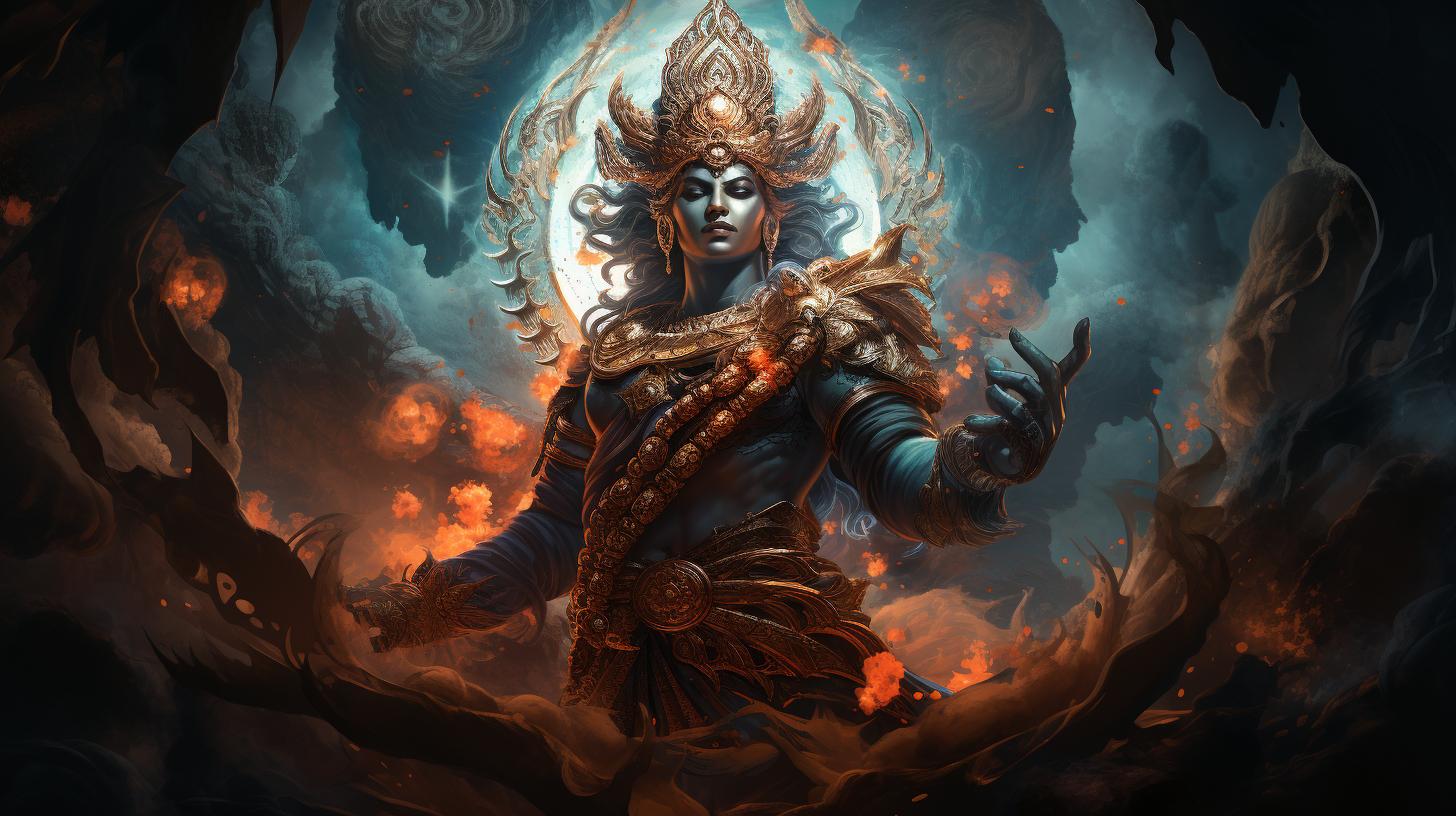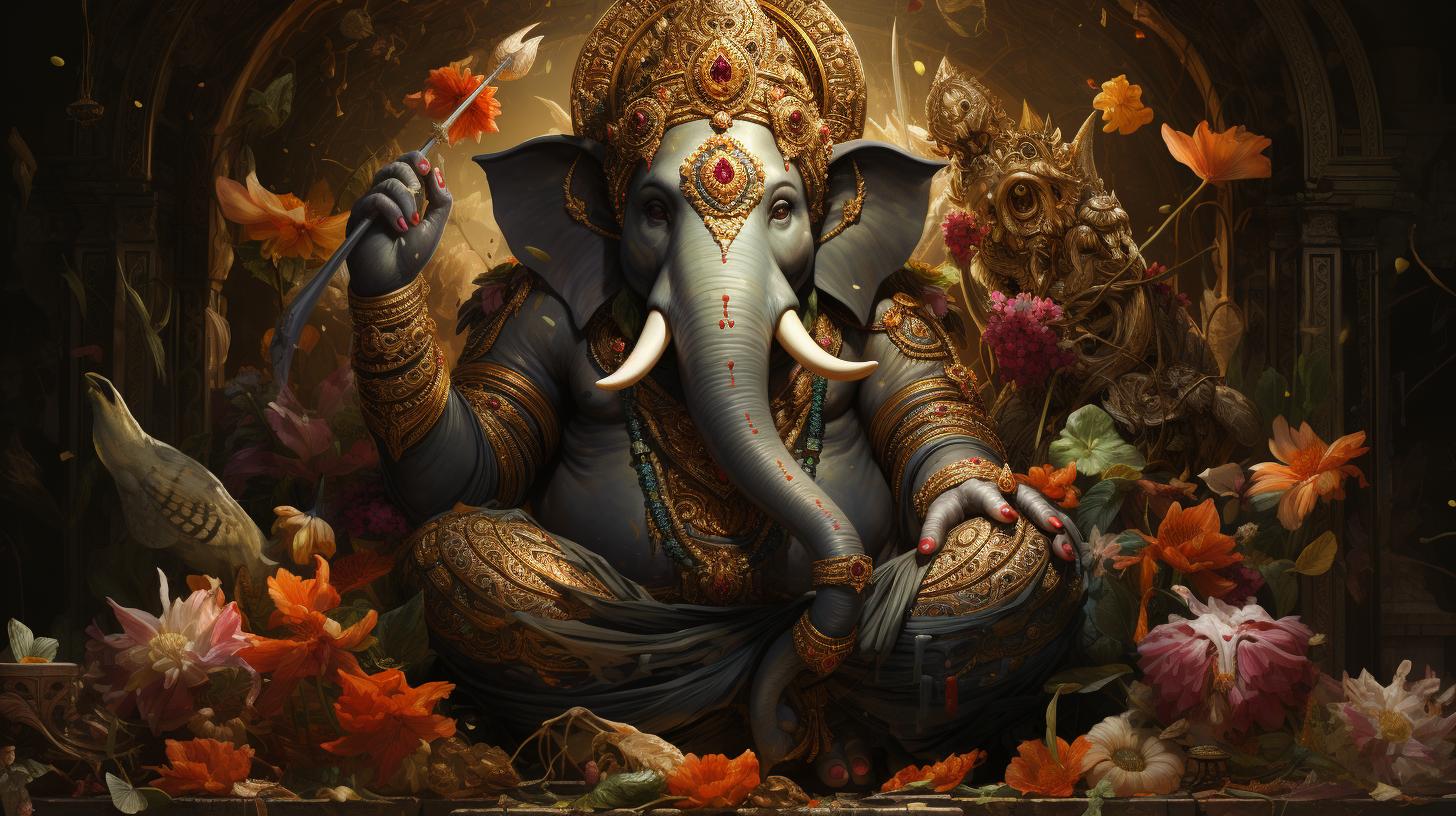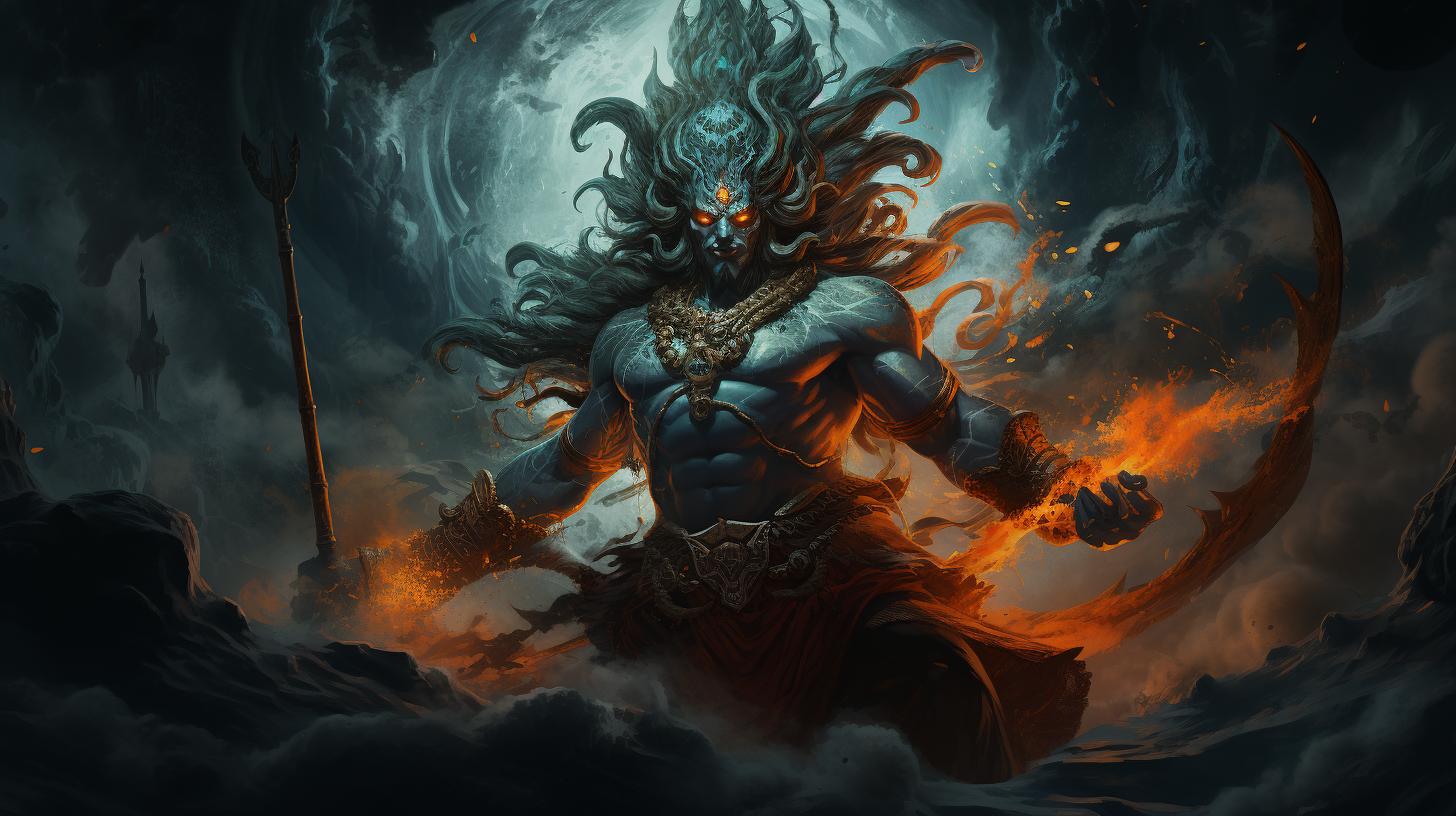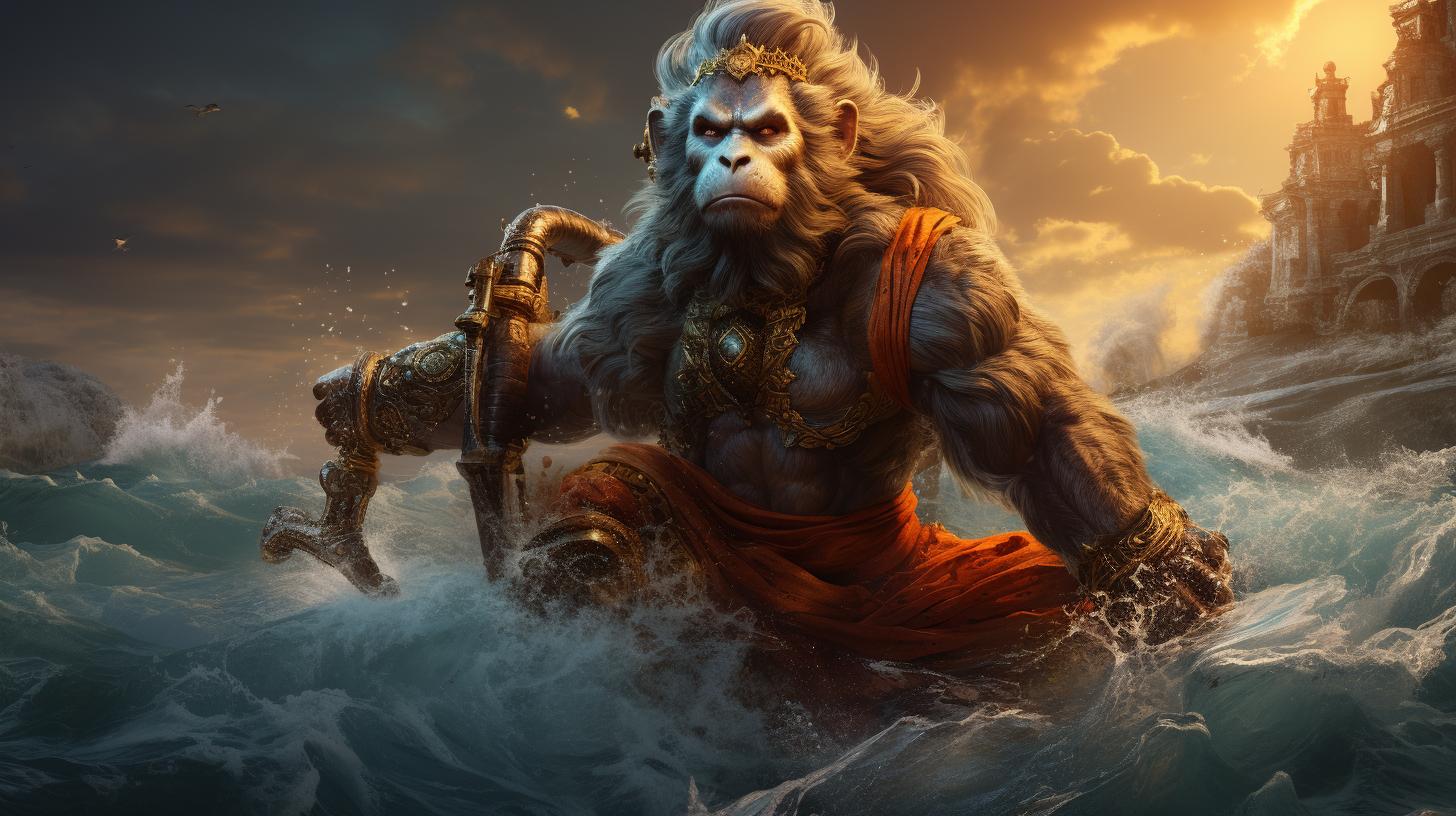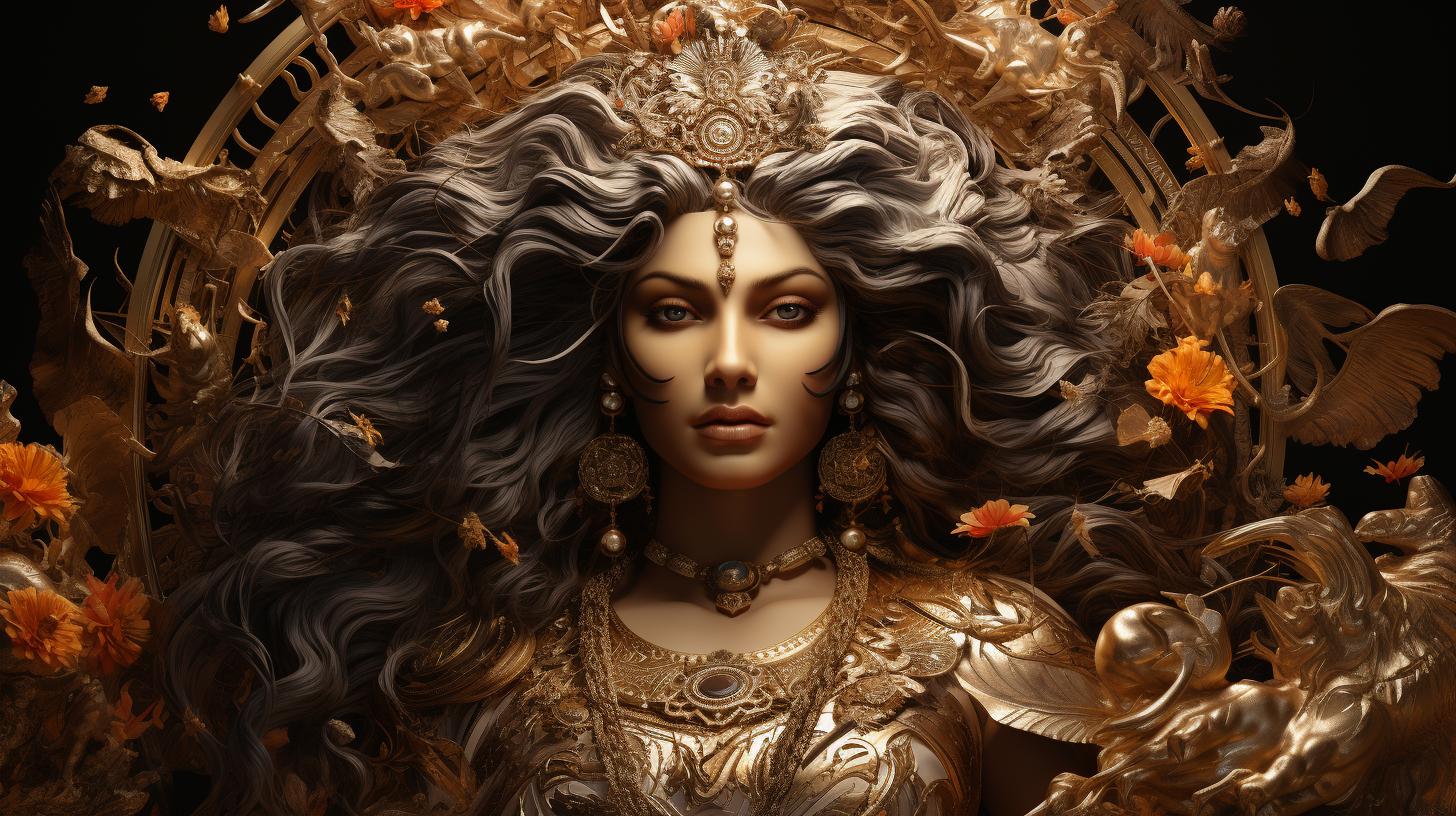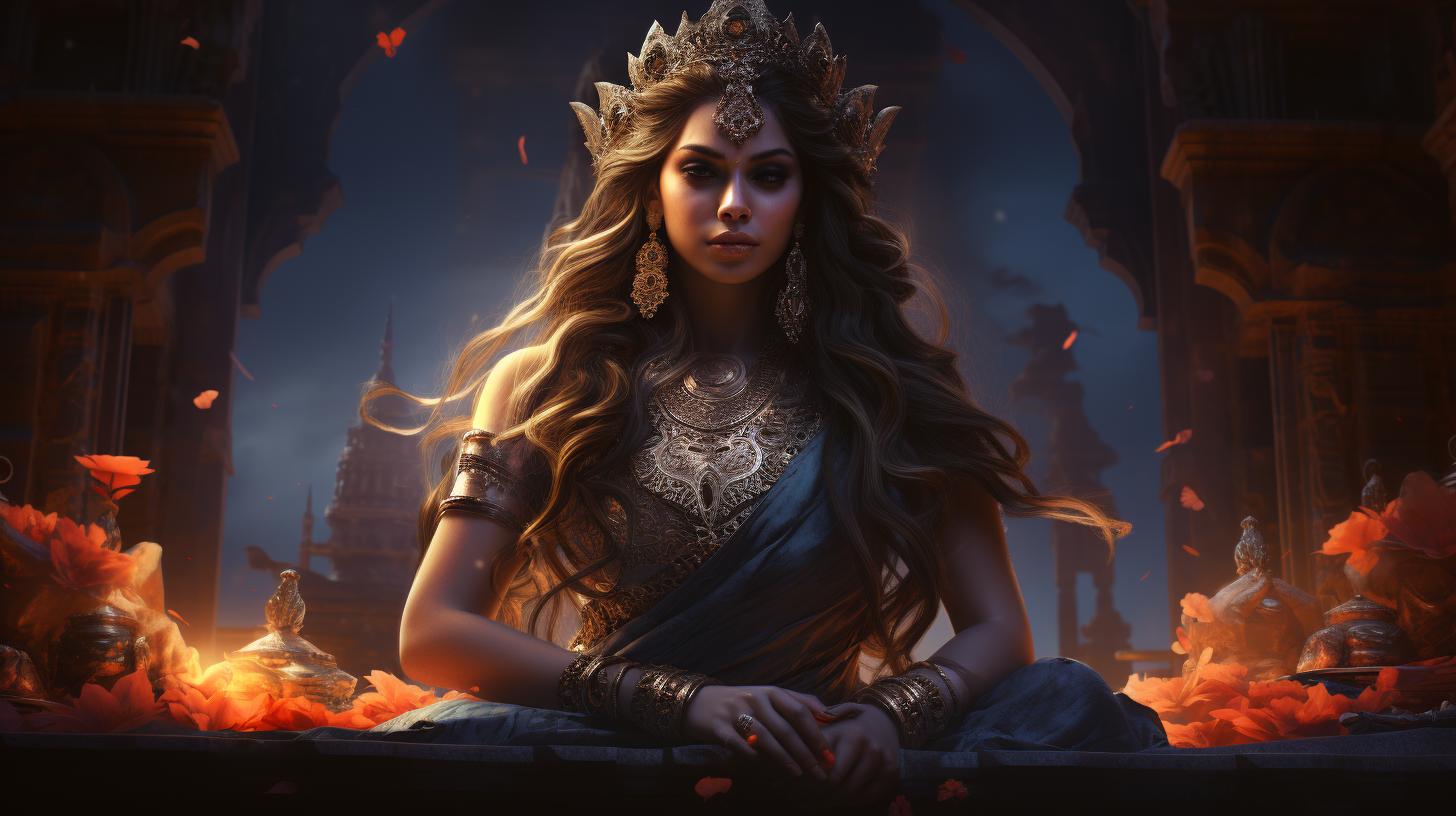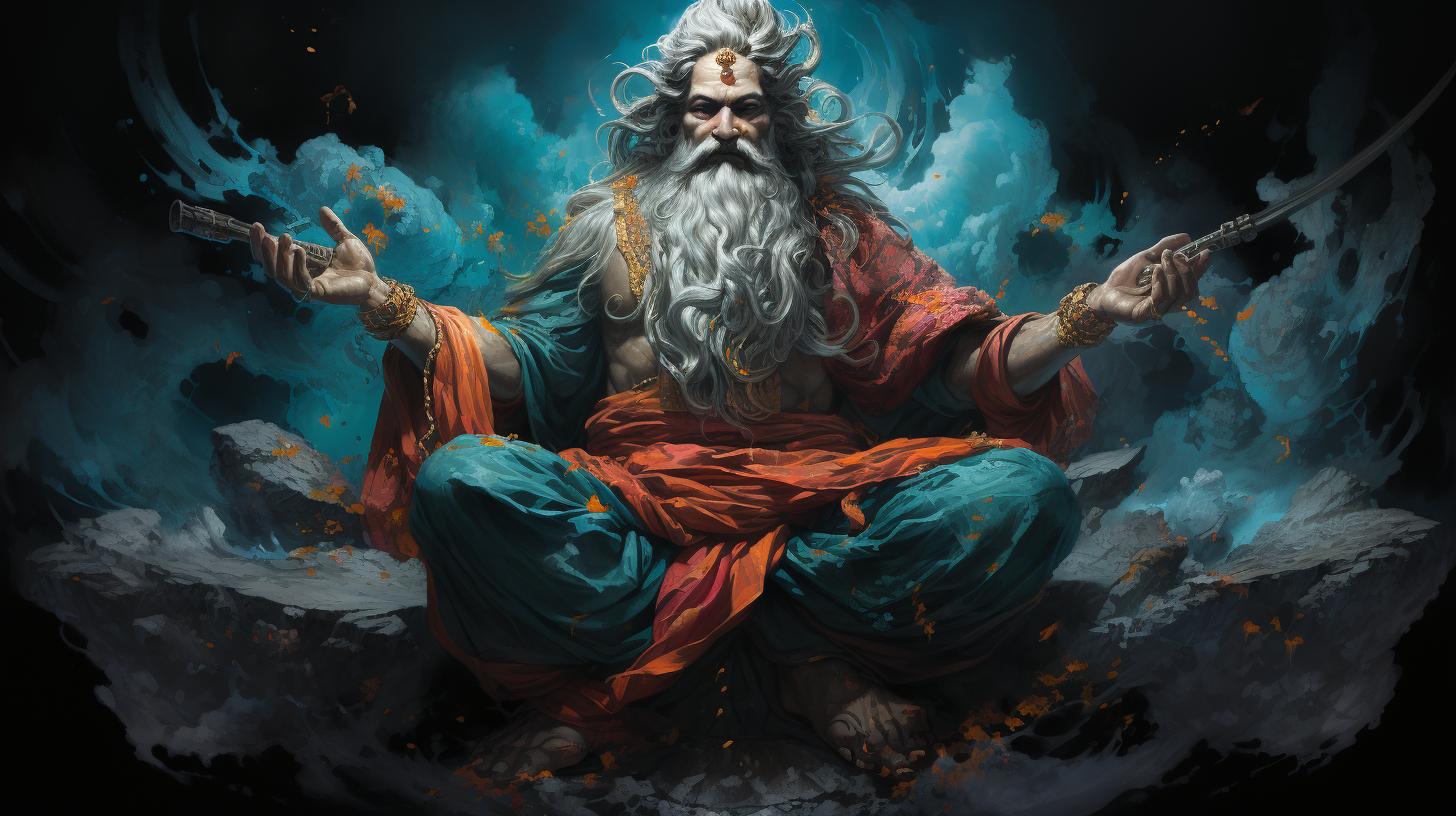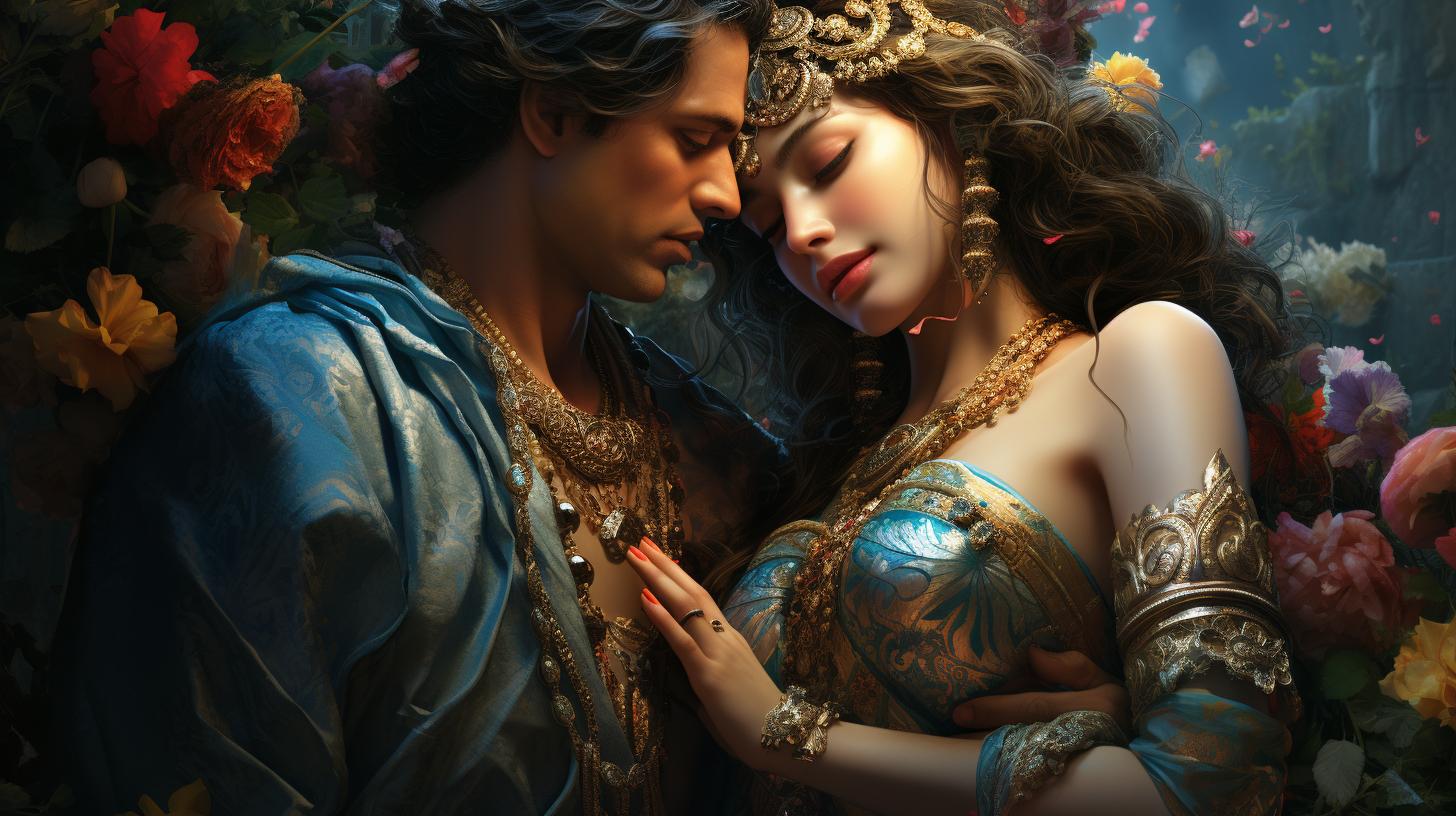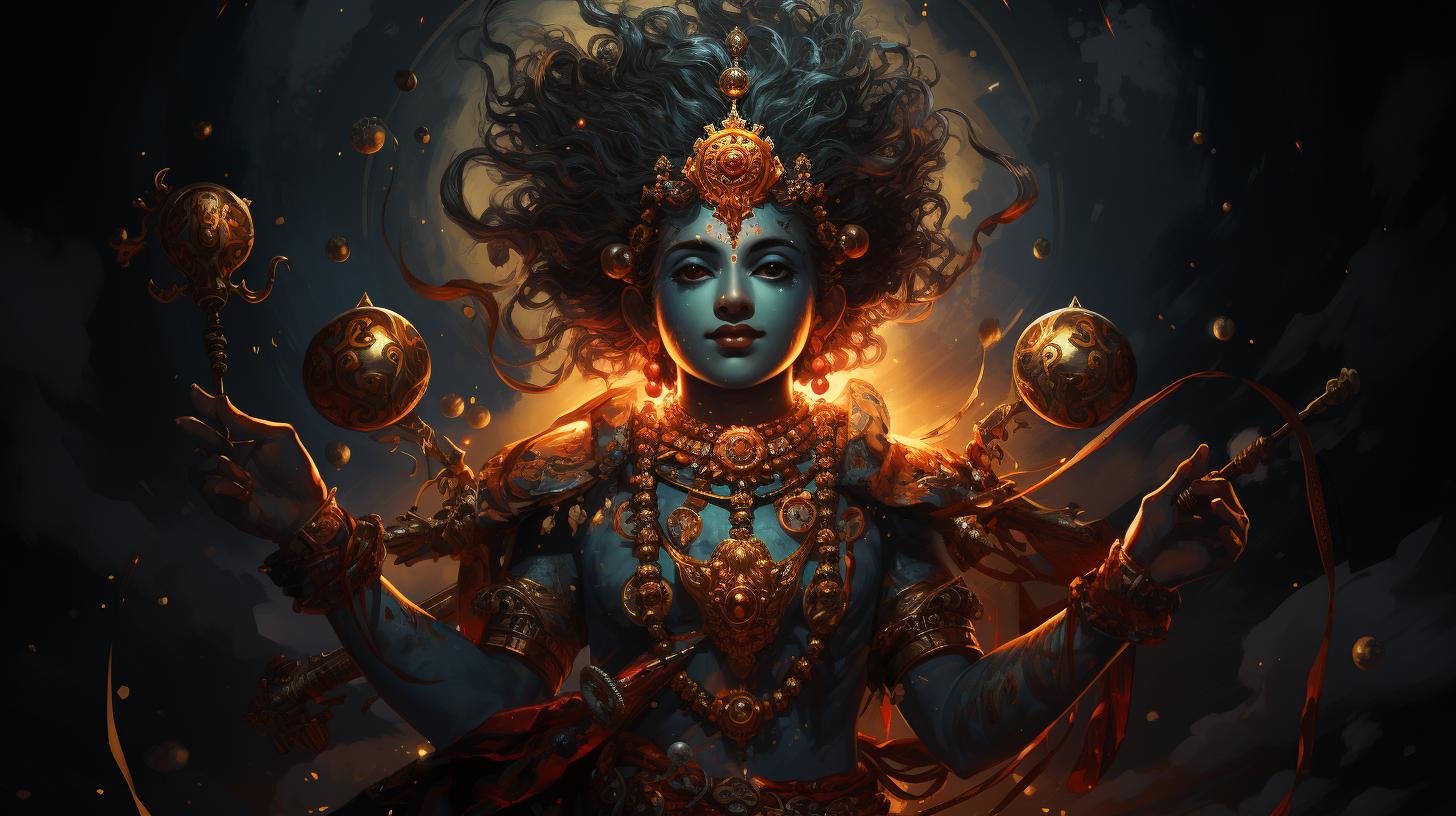What is Vishnu the god of: Understanding the Role and Significance of Vishnu in Hinduism
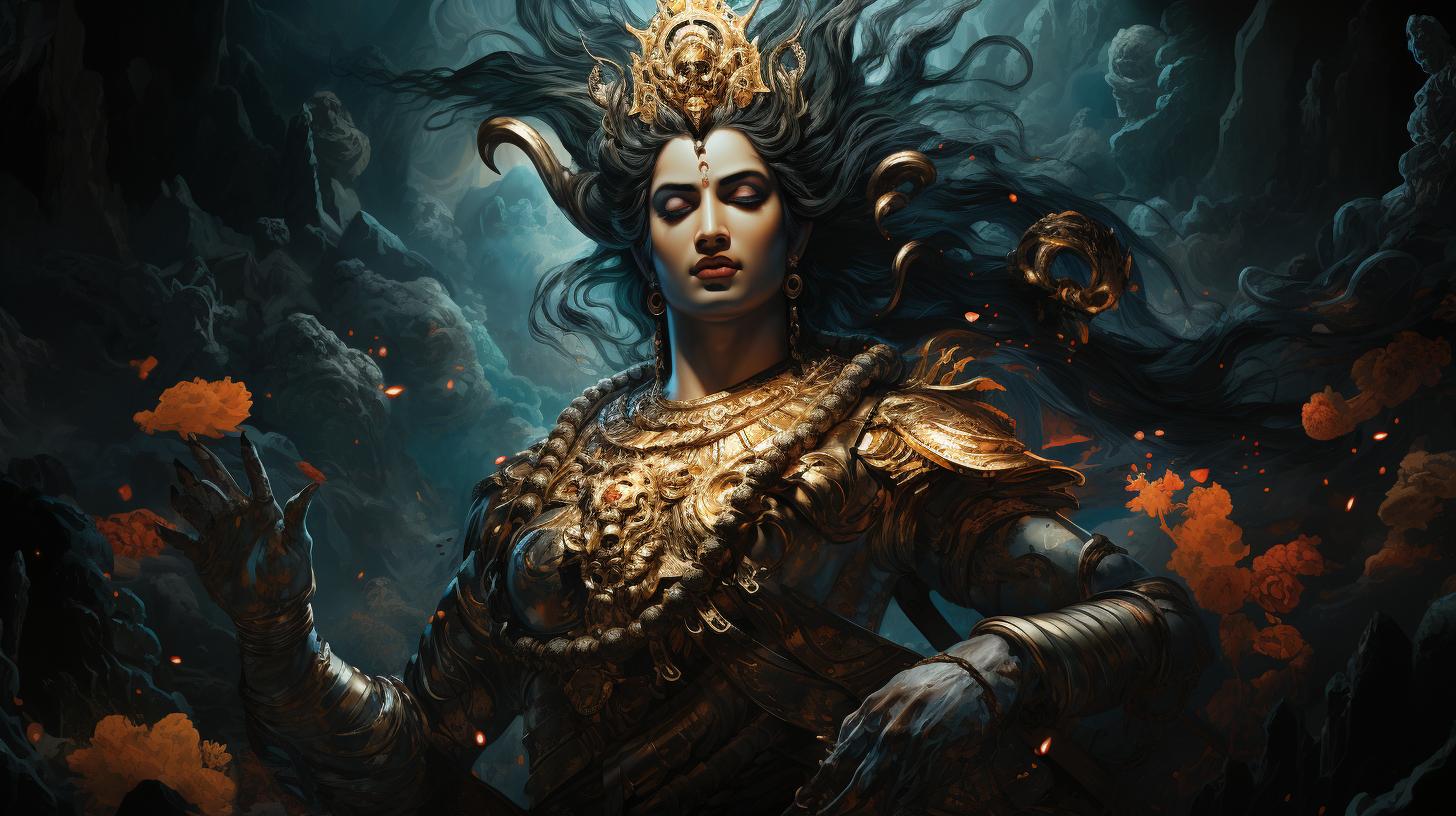
Vishnu, a prominent deity in Hinduism, is revered as the god of preservation and the protector of the universe. With his blue skin and four arms, Vishnu is often depicted resting on the cosmic ocean, accompanied by his consort Lakshmi. His divine responsibilities are symbolized by the conch, discus, lotus, and mace he carries.
Vishnu’s avatars, such as Rama and Krishna, play significant roles in Hindu mythology, and his worship finds expression in temples and devotional practices. Join us as we explore the various aspects of Vishnu’s divinity and cultural significance in Hinduism.
Understanding Vishnu in Hinduism
The Role of Vishnu as the Protector and Preserver
Vishnu, one of the main deities in Hinduism, holds the significant role of being the protector and preserver of the universe. In times of turbulence and imbalance between good and evil, Vishnu is believed to reincarnate on Earth to restore harmony.
This divine duty encompasses safeguarding the gods from demons, teaching moral lessons, and rescuing celestial beings from perilous situations.
Significance of Vishnu’s Avatars: Rama and Krishna
Vishnu manifests in various avatars to fulfill his divine mission. Two of the most renowned avatars are Rama and Krishna. Rama, an ideal ruler and protagonist in the epic Ramayana, epitomizes righteousness and dedication.
Krishna, a central figure in the Mahabharata, is revered for his teachings in the Bhagavad Gita and his mischievous yet charming nature. These avatars exemplify Vishnu’s wisdom and serve as moral compasses for humanity.
Vishnu’s Consort: Lakshmi, the Goddess of Fortune and Prosperity
Lakshmi, the goddess of fortune and prosperity, is the divine consort of Vishnu. She symbolizes wealth, abundance, and beauty. Often depicted massaging Vishnu’s feet, Lakshmi represents devotion and the nurturing aspect of the divine.
Together, Vishnu and Lakshmi embody the cosmic balance between preservation and abundance, offering blessings and prosperity to their devotees.
Vishnu’s Iconography and Symbolism
Vishnu’s Blue Skin and Four Arms
One of the distinguishing features of Vishnu is his blue skin tone. This representation symbolizes his transcendence and association with the infinite and cosmic forces. The blue color suggests his divine nature, signifying his omnipotence and sacredness.
Another notable aspect is his depiction with four arms. Each arm represents a specific aspect of his divine authority and responsibilities. The four arms symbolize his power to maintain and protect the universe, balancing cosmic equilibrium.
Depictions of Vishnu in Various Forms
Vishnu is portrayed in different forms depending on the particular aspect or episode being depicted. Various forms include him standing, sitting, or reclining on the cosmic serpent Shesha, known as Ananta, floating on the celestial oceans.
Additionally, Vishnu is depicted in his avatars, such as Rama and Krishna, where he appears as a human warrior prince or a playful cowherd. These forms highlight his interactions with humanity and his role in guiding and enlightening individuals.
Vishnu’s Divine Attributes: Conch, Discus, Lotus, and Mace
Vishnu is often depicted holding specific divine attributes that represent different aspects of his responsibilities. These attributes include:
- The Conch (Shankha): Symbolizes the primal sound of creation, representing the origin and dissolution of the universe.
When blown, it signifies the victory of good over evil and divine presence.
- The Discus (Sudarshana Chakra): Represents the cyclical nature of time and the power to eliminate ignorance and illusion.
It symbolizes the divine weapon used to protect righteousness.
- The Lotus (Padma): Signifies purity, beauty, and spiritual liberation. It symbolizes the unfolding of spiritual consciousness and divine enlightenment.
- The Mace (Gada): Represents strength and the power to demolish evil forces.
It symbolizes Vishnu’s ability to protect and preserve righteousness.
These divine attributes further emphasize Vishnu’s role as a powerful deity responsible for maintaining cosmic order and protecting the universe from negative forces.
Vishnu, the god of preservation and protection, is associated with various aspects that define his celestial abode and divine associations. Here, we delve into the significance of Vishnu’s abode, his vehicle, and his association with the sun and the Trimurti.
Vaikuntha: Vishnu’s Heavenly Abode
Vaikuntha is the celestial abode of Vishnu, described as a realm of eternal bliss and spiritual perfection. It is depicted as a divine paradise where Vishnu resides with his consort Lakshmi, surrounded by celestial deities.
Vaikuntha represents the ultimate destination for devotees who strive for liberation and seek union with the divine.
Garuda: Vishnu’s Vehicle
Garuda, the legendary eagle-like creature, serves as Vishnu’s sacred vehicle. According to Hindu mythology, Garuda is portrayed as Vishnu’s loyal mount and symbolizes strength, speed, and the power to overcome obstacles.
The association between Vishnu and Garuda highlights their inseparable connection and the divine synergy between them.
Vishnu’s Association with the Sun and the Trimurti
Vishnu is closely associated with the sun as one of his cosmic manifestations. The sun symbolizes energy, light, and life, reflecting Vishnu’s role in sustaining and preserving the universe. Additionally, as a part of the Trimurti, the divine Trinity, Vishnu represents the aspect of preservation, complementing the creative and destructive forces embodied by Brahma and Shiva respectively.
Through his heavenly abode, divine vehicle, and association with the sun and the Trimurti, Vishnu’s presence and influence are felt throughout the Hindu cosmology, emphasizing his essential role in maintaining harmony and balance in the universe.
Vishnu’s Divine Missions
Vishnu, as one of the most significant deities in Hinduism, is involved in various divine missions to maintain balance and protect the universe. Through his avatars, he carries out important tasks that range from safeguarding the gods to teaching moral lessons and rescuing mythical figures.
Let’s explore these divine missions:
Protection of Gods from Demons
- Vishnu assumes different avatars to protect the gods from powerful demons who threaten their existence.
- These avatars possess extraordinary strength and skills to overcome the evil forces and restore peace and harmony.
- One such instance is the avatar of Lord Rama, who fought against the demon king Ravana to rescue his wife, Sita, and uphold righteousness.
Moral Teachings and Lessons through Avatars
- Vishnu’s avatars also serve as moral exemplars, teaching humanity valuable lessons about righteousness, duty, and devotion.
- For instance, Lord Krishna, an avatar of Vishnu, imparts profound wisdom to Arjuna in the Bhagavad Gita, guiding him in the path of righteousness and fulfilling his duties.
- These teachings continue to inspire people to lead virtuous lives and make ethical choices.
Rescuing the Earth Goddess and Other Mythical Stories
- Vishnu’s avatars are often involved in rescuing the Earth Goddess or reviving her from perilous situations.
- One prominent example is the story of Kurma, the turtle avatar of Vishnu, who supports the churning of the cosmic ocean to obtain the elixir of immortality.
- These mythical stories symbolize the eternal struggle between good and evil, with Vishnu’s avatars playing a crucial role in restoring order and protecting the world.
Through his divine missions, Vishnu showcases his immense power, wisdom, and unwavering commitment to upholding righteousness.
These stories and legends continue to inspire devotion and reverence among the followers of Hinduism.
Vishnu in Hindu Scriptures
Vishnu holds a significant place in Hindu scriptures, with numerous references that highlight his importance and divine nature. Let’s explore some of the prominent mentions of Vishnu in the Rig Veda and Shatapatha Brahmana, as well as his portrayal in the epic tales of Mahabharata and Ramayana.
Furthermore, we’ll delve into the profound significance of Vishnu in the sacred text of the Bhagavad Gita.
Vishnu’s References in the Rig Veda and Shatapatha Brahmana
The Rig Veda, one of the oldest Hindu scriptures composed around 1500 BCE, includes hymns and verses praising the various deities, including Vishnu. It portrays him as an all-pervading cosmic force who sustains the universe, guarding it from chaos and disorder.
The Shatapatha Brahmana, an ancient text associated with the Yajur Veda, further elaborates on Vishnu’s role as the preserver and protector, emphasizing his connection to the sacrificial rituals performed by the priests.
Vishnu in Epics: Mahabharata and Ramayana
The Mahabharata, a monumental epic composed around 400 BCE, narrates the story of the great Kurukshetra war and the profound wisdom imparted by Lord Krishna, an incarnation of Vishnu. Krishna provides divine guidance to Arjuna in the form of the Bhagavad Gita, promoting righteousness, duty, and devotion.
Similarly, the Ramayana, composed by sage Valmiki, beautifully depicts Vishnu’s seventh incarnation, Lord Rama, and his extraordinary journey to rescue his wife Sita from the demon king Ravana. These epic tales not only highlight the heroic deeds of Vishnu’s avatars but also convey moral and ethical lessons for humanity.
Vishnu’s Significance in the Bhagavad Gita
The Bhagavad Gita, a revered philosophical dialogue, forms a crucial part of the Hindu epic Mahabharata. It presents a profound conversation between Prince Arjuna and the divine incarnation of Vishnu, Lord Krishna. The Gita explores various aspects of life, spirituality, and the nature of existence, offering profound insights into dharma (duty) and the path to self-realization.
Vishnu, through the teachings of Krishna, emphasizes the importance of selfless action and devotion to attain spiritual enlightenment. The profound wisdom of the Bhagavad Gita continues to guide people on their spiritual journeys to this day.
Cultural Significance of Vishnu
Vishnu, the god of preservation and protection, holds immense cultural significance in Hinduism. His worship is deeply embedded in the traditions and practices of Hindu temples, Indian art and literature, and even in Southeast Asian culture.
Vishnu Worship in Hindu Temples
Vishnu temples are prominent centers of devotion and spiritual practice for Hindus. These temples serve as hubs where devotees gather to offer prayers, perform rituals, and seek blessings from Vishnu.
The grandeur and intricacy of these temples reflect the importance and reverence given to Vishnu.
Vishnu’s Impact on Indian Art and Literature
Vishnu has been a significant muse for Indian artists and literary figures throughout history. The magnificent sculptures, paintings, and literary works inspired by Vishnu’s various forms and avatars have contributed to the richness of Indian art and literature.
These artistic creations beautifully depict Vishnu’s attributes and the stories associated with him.
Indian Art
- Paintings: Vishnu is often portrayed in intricate and vibrant artwork, showcasing his divine qualities and cosmic presence.
- Sculptures: Elaborate sculptures of Vishnu adorn temples and sacred sites, depicting his iconic representations and avatars.
Indian Literature
- Epics: Vishnu plays a central role in ancient Indian epics like the Mahabharata and the Ramayana, with his avatars, such as Rama and Krishna, driving the narrative and embodying moral values.
- Poetry and Devotional Texts: Numerous poems, hymns, and devotional texts have been composed to praise Vishnu’s virtues and seek his blessings.
Influence of Vishnu in Southeast Asian Culture
Vishnu’s influence extends beyond India and is prominent in various Southeast Asian cultures.
His presence is evident in the art, architecture, and religious practices of countries like Indonesia, Cambodia, and Thailand. The famous Vishnu statue at Angkor Wat in Cambodia is a testament to the cultural integration of Vishnu’s worship in these regions.
Vishnu’s cultural significance can be observed in the rich tapestry of Hindu traditions, art, literature, and customs. His worship in temples, artistic representations, and influence in Southeast Asian cultures continue to uphold his revered stature as the preserver and protector of the universe.
Popular Vishnu Devotional Practices and Festivals
Devotion to Vishnu is expressed through various practices and celebrated through vibrant festivals. These devotional practices are cherished by millions of devotees around the world, who come together in worship and celebration.
Let’s explore some of the popular Vishnu devotional practices and festivals:
Jagannath Temple and its Connection to Vishnu
The Jagannath Temple, located in Puri, Odisha, is one of the most significant pilgrimage sites dedicated to Vishnu. It is believed to be the earthly abode of Lord Jagannath, an avatar of Vishnu.
The temple is known for its Rath Yatra, a grand chariot festival where idols of Jagannath, Balabhadra, and Subhadra are carried in beautifully adorned chariots throughout the city, attracting millions of devotees.
Vishnu Purana and Vishnu Sahasranama
The Vishnu Purana is a sacred Hindu text that elaborates upon the life, legends, and teachings of Vishnu. It provides insights into the divine characteristics of Vishnu’s avatars and his significance in the cosmic realm.
Another revered scripture is the Vishnu Sahasranama, a compilation of a thousand names of Vishnu that extols his various attributes, bestowing spiritual blessings upon those who recite it.
Celebrations and Observances Honoring Vishnu
Several festivals and observances are dedicated to Vishnu, offering devotees an opportunity to express their reverence and seek his blessings.
Some of the notable celebrations include:
- Vaikuntha Ekadashi: This auspicious day is celebrated in the Hindu month of Margashirsha (December-January), where devotees observe fasting and engage in devotional activities to seek entry into the divine abode of Vishnu.
- Janmashtami: This joyous festival commemorates the birth of Lord Krishna, an avatar of Vishnu.
Devotees keep fasts, engage in prayer, participate in spiritual discourses, and enact dramatic performances highlighting Krishna’s divine leelas (playful activities).
- Rama Navami: Celebrated on the ninth day of the Hindu month of Chaitra (March-April), Rama Navami marks the birth of Lord Rama, another revered avatar of Vishnu.
Devotees chant sacred hymns, perform elaborate rituals, and reenact scenes from the epic Ramayana.
- Deepavali: Also known as Diwali, this festival of lights signifies the triumph of good over evil. Devotees illuminate their homes with oil lamps, offer prayers to Vishnu and Lakshmi, exchange gifts, and indulge in festive feasts.
Through these devotional practices and festivals, devotees express their love, devotion, and gratitude towards Vishnu, seeking his divine blessings and guidance in their spiritual journeys.
Exploring Other Hindu Deities and Their Relationship with Vishnu
The Hindu pantheon consists of a vast array of deities, each with their own unique attributes and significance. In this section, we delve into the relationship between Vishnu and two other prominent gods – Shiva and Brahma.
Vishnu’s Connection with Shiva and Brahma
Vishnu, Shiva, and Brahma form the Trimurti, the divine trinity of Hinduism.
While Vishnu is associated with preservation, Shiva represents destruction or transformation, and Brahma embodies creation. Together, they maintain the cosmic balance and govern the cycle of existence.
Vishnu’s relationship with Shiva is both complementary and intertwined.
They are often depicted together in temples, emphasizing their connection as different aspects of the same ultimate reality. Vishnu’s avatars, such as Rama and Krishna, are revered by devotees of Shiva as well, showcasing the harmonious coexistence of these deities.
Similarly, Vishnu shares a harmonious relationship with Brahma, the creator. Brahma is said to have originated from Vishnu, and Vishnu is often depicted as resting on the lotus emerging from Brahma’s navel.
This imagery signifies the interdependence and unity between the gods in the cosmic order.
Vishnu’s Place among Other Gods and Goddesses
While Vishnu is recognized as a supreme deity in Hinduism, he is also deeply interconnected with many other gods and goddesses. These divine beings play various roles in the Hindu pantheon and have distinct relationships with Vishnu.
Goddess Lakshmi, Vishnu’s consort, holds immense importance. She symbolizes wealth, prosperity, and fortune. Lakshmi is believed to reside in the heart of Vishnu and is inseparable from him. Her presence exemplifies the divine union and the sharing of responsibilities between Vishnu and his consort.
- Goddess Saraswati, the embodiment of knowledge, arts, and music, is associated with Vishnu through his avatar as Lord Rama. She is often depicted alongside Rama, his wife Sita, and his devotee Hanuman.
- Lord Hanuman, a devoted disciple of Lord Rama, is considered an incarnation of Lord Shiva. His unwavering loyalty to Rama signifies the deep devotion and dedication found in the Hindu faith.
- Lord Ganesha, the elephant-headed god of wisdom and beginnings, is often worshipped at the start of any new endeavor.
He is associated with Vishnu through his connections with Rama and Krishna.
- Lord Kartikeya, the warrior god and the son of Shiva, is another deity linked with Vishnu.
His worship is prevalent in South India and his legends intertwine with both Vishnu and Shiva.
These are just a few examples of the diverse relationships Vishnu shares with other gods and goddesses in Hindu mythology.
Each deity adds depth and richness to the intricate tapestry of Hindu religious beliefs and practices.
By exploring the connections between Vishnu, Shiva, Brahma, and other deities, we deepen our understanding of the interwoven nature of Hindu cosmology and the profound spiritual significance attributed to Vishnu.
..

